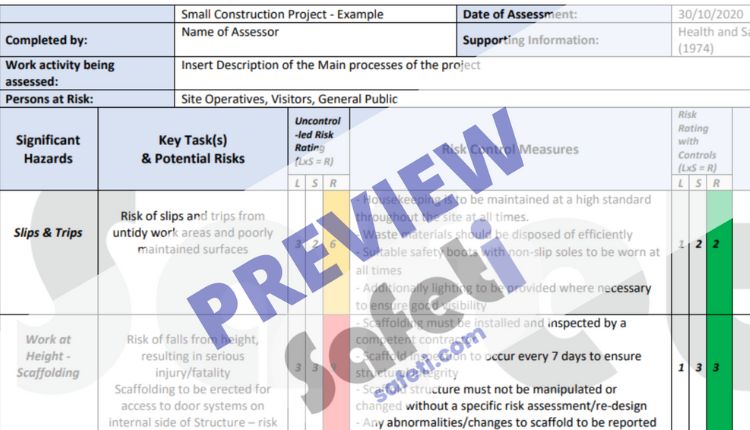
How Can Construction Risk Assessment Increase Productivity?
If it ain’t broke, don’t fix it, goes the proverb. This is true for a lot of things in life, however this ancient statement is completely false when discussing the safety dangers in the construction industry.
To carry out their work in a manner that was compliant with the law, construction employees historically had to complete a mountain of risk assessment forms. In most other developed economies, including the majority of those outside of Australia, this risk assessment procedure is mandated by law. This reminds us of the proverb: If the risk assessment process is working, why fix it?
Save Time and Money
If you’re the manager of a construction company, you probably already know how much time your staff spends on OHS documentation. Given the risk of significant injury or worse from taking shortcuts in the process, this productivity loss is necessary.
A significant hit is also taken by backend administration when it comes to storing the finished documents. Typically, managers must organize the risk assessments for each job and keep them for up to five years in case regulators ask for documentation of compliance or if an accident occurs and legal action is necessary. Again, using this approach to follow health and safety rules is expensive and ineffective.
Technology Provides a Remedy That Won’t Jeopardize Worker Safety
Risk assessment software is a means to complete all the required paperwork without having to deal with filing. Additionally, since using software is speedier than using paper forms, employees can spend more time working rather than filling out paperwork. Check out this case study on an Australian electrical contractor for more information on this area of Construction Risk Assessment. They obtained dynamic benefits from the software.
Fortunately, with software, increased business productivity doesn’t have to compromise employee health and safety.
How Does It Function?
The software alternative functions by substituting a digital alternative for the conventional paper-based approach. In other words, you type it on your smartphone or tablet instead of writing it down on paper.
Software, however, is not all created equal. Some simply offer a digital replica of the paper form, which is neither more user-friendly nor compliant. It might be difficult enough to integrate new tools into your workflow without having to deal with inadequate safety management software as well. So it’s important to spend time investigating your possibilities.
Why Is a Risk Assessment Necessary and What Does It Entail?
All of this may seem like just additional bureaucratic hoops that managers of businesses must jump through, but when done correctly, they save lives and prevent injuries. Only one of the puzzle’s pieces is health and safety.
Safe operating procedures involve more than just knowing how to create a risk assessment; they also involve increasing efficiency.
What a Risk Assessment Is First Before We Continue
In a step-by-step procedure, dangers at work are identified, potential risk takers are observed, risk reduction strategies are outlined, and the document is reviewed and updated as circumstances change. These guidelines seek to provide a uniform standard for safe work practices across the board in the construction sector.
In addition to detecting potential risks associated with a Construction Risk Assessment Example also take into account a number of other variables, such as contractual commitments, financial limits, and project specifications. It is critical to take these other factors into account when evaluating the health and safety risks of a construction project rather than viewing them as isolated issues unrelated to other aspects of the project. Failing to do so could expose you to risks you may not have initially anticipated or planned for.
There are several certified health and safety experts who may be hired to do expert analyses and have experience in a variety of situations, including the construction sector. Given that construction is frequently regarded as a high-risk area, it is essential to have an expert assess the project.
Many businesses go this a step further by hiring the same businesses to do air testing of the environment once the project is complete to make sure it conforms to UK building rules, frequently to coincide with testing. Throughout the nation, there are specialized risk assessments and air testing businesses with knowledge of a variety of industries, including the construction sector. Local services are frequently offered by these, such as risk assessment in the Dorset region and air testing in Bournemouth.
Conclusion
It is essential to get the advice of professionals and have a comprehensive rRisk Assessment for Construction performed before beginning any project, whether it be one involving construction or not. Additionally, by consulting the specialists, you can be sure that all potential issues have been assessed and that precautions have been taken to protect everyone’s health and safety.
This is the justification for the significance of safe operating practices. They safeguard workers’ wellbeing and stop accidents and fatalities. The use of risk assessment software may very well enhance a crucial area of workplace health and safety.




